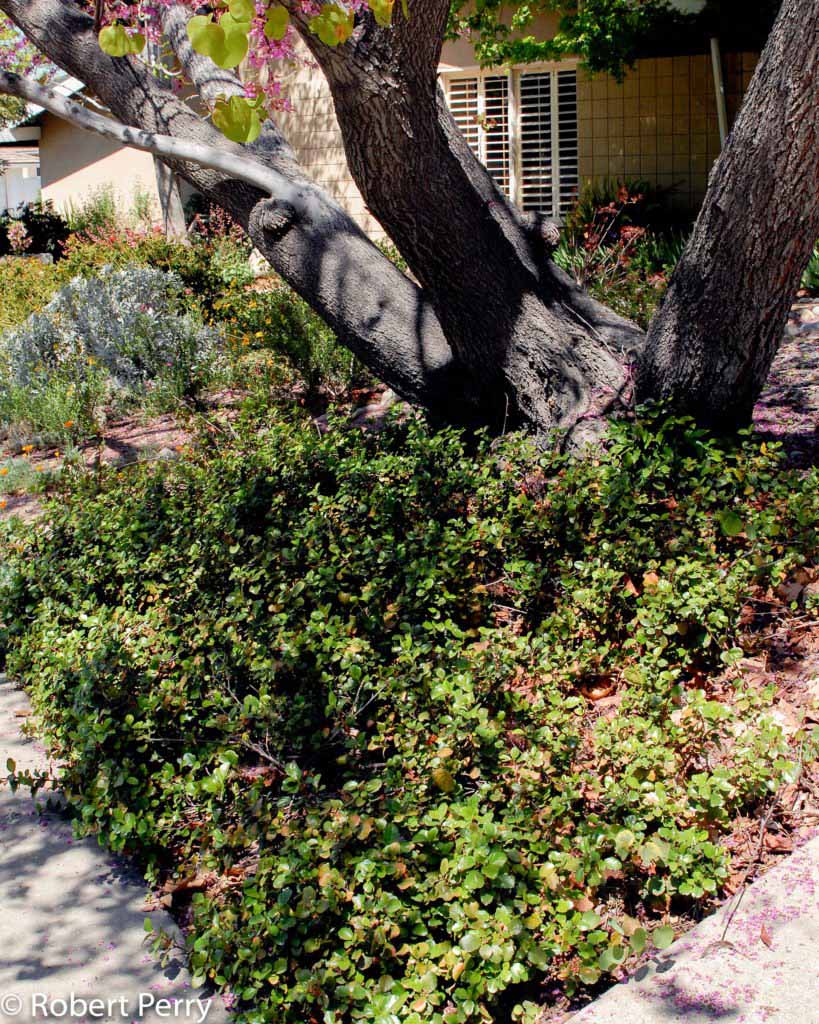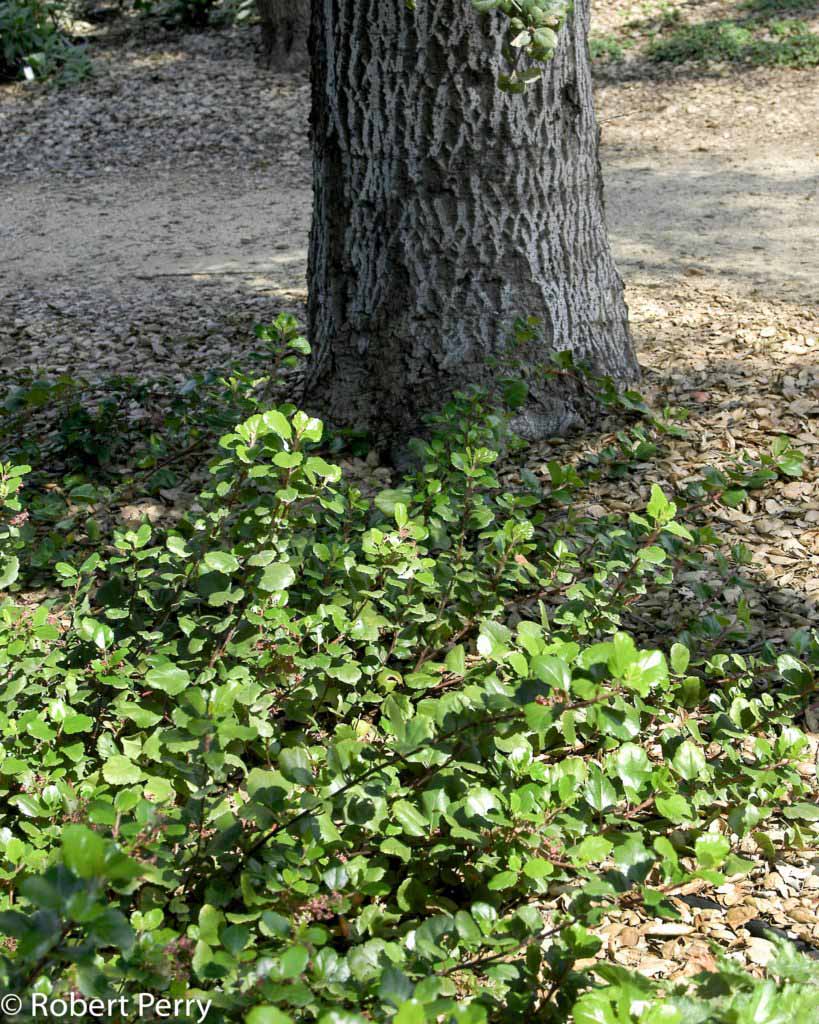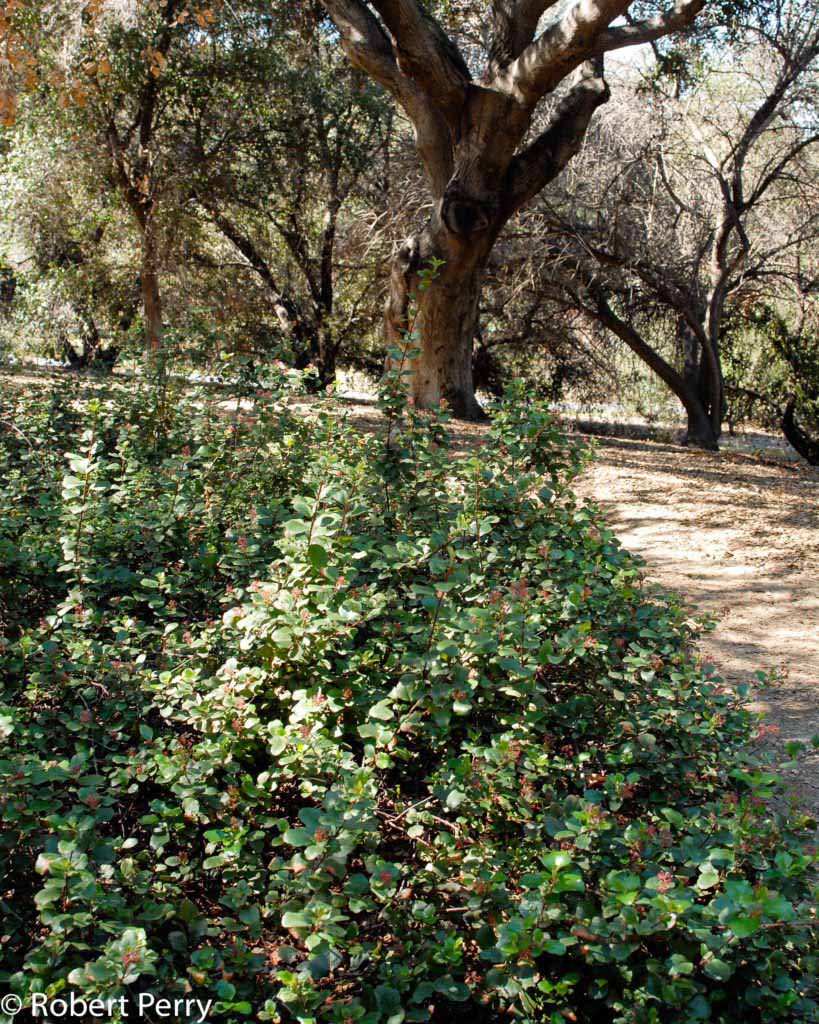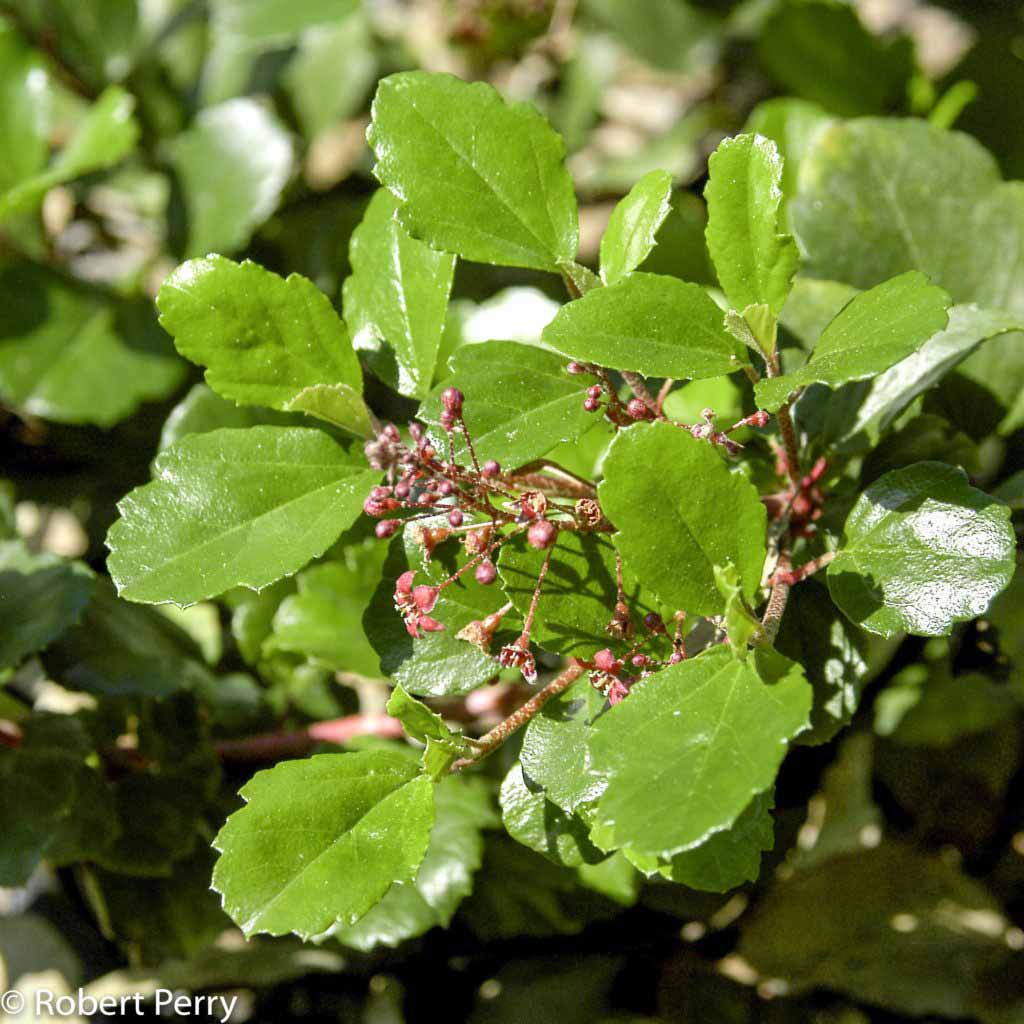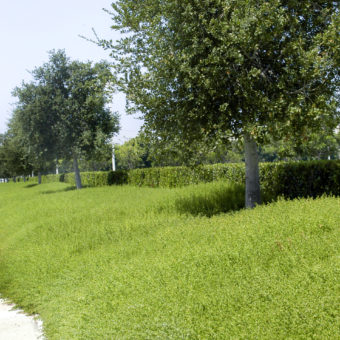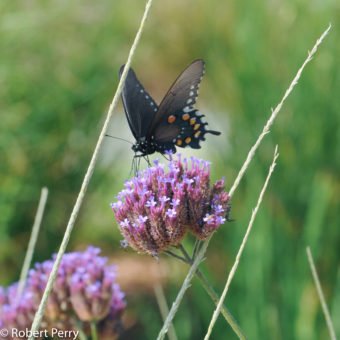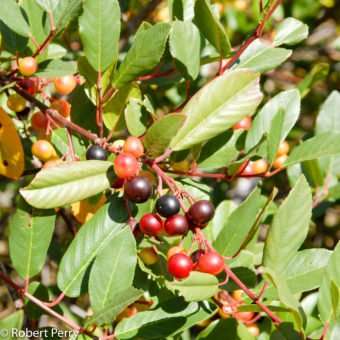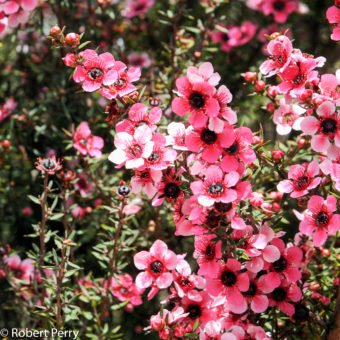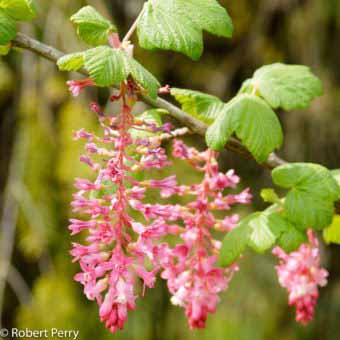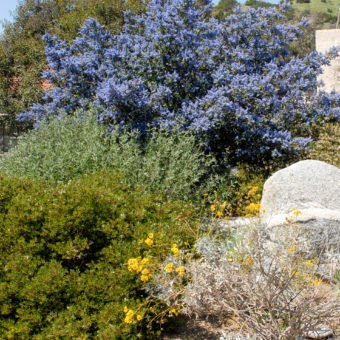Evergreen currant is a rambling evergreen shrub with long arching branches and glossy deep green foliage that grows 2-3 ft. tall and spreads 5-7 ft. wide. Elliptical leaves have coarsely toothed margins and produce a spicy fragrance when crushed; tiny maroon flowers occur in early spring.
Evergreen currant is native to shaded slopes and canyons on Santa Catalina Island and within the Peninsular Ranges of San Diego County and Baja California. It grows with a sprawling habit that can establish new plants when its arching branches touch the ground and form roots in moist soils.
Evergreen currant is one of the best choices as an understory plant to California native oaks and is included in the Coast Live Oak Palette. It performs best in partial shade, tolerates many soil types and can endure moderate drought stress. Normal winter rains are needed to sustain robust seasonal growth before transitioning into dry summer conditions.

